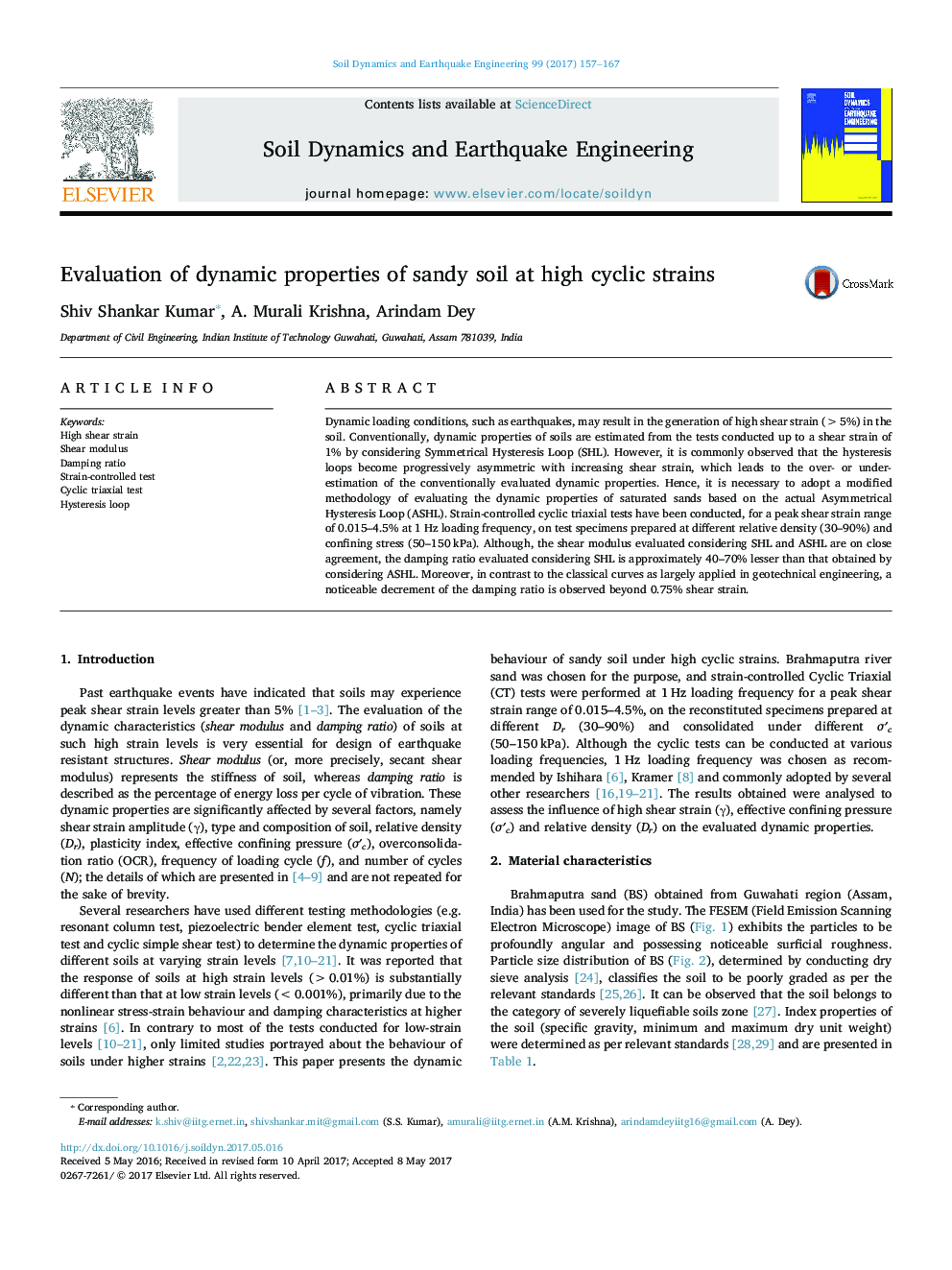| Article ID | Journal | Published Year | Pages | File Type |
|---|---|---|---|---|
| 4927223 | Soil Dynamics and Earthquake Engineering | 2017 | 11 Pages |
Abstract
Dynamic loading conditions, such as earthquakes, may result in the generation of high shear strain (>5%) in the soil. Conventionally, dynamic properties of soils are estimated from the tests conducted up to a shear strain of 1% by considering Symmetrical Hysteresis Loop (SHL). However, it is commonly observed that the hysteresis loops become progressively asymmetric with increasing shear strain, which leads to the over- or under-estimation of the conventionally evaluated dynamic properties. Hence, it is necessary to adopt a modified methodology of evaluating the dynamic properties of saturated sands based on the actual Asymmetrical Hysteresis Loop (ASHL). Strain-controlled cyclic triaxial tests have been conducted, for a peak shear strain range of 0.015-4.5% at 1Â Hz loading frequency, on test specimens prepared at different relative density (30-90%) and confining stress (50-150Â kPa). Although, the shear modulus evaluated considering SHL and ASHL are on close agreement, the damping ratio evaluated considering SHL is approximately 40-70% lesser than that obtained by considering ASHL. Moreover, in contrast to the classical curves as largely applied in geotechnical engineering, a noticeable decrement of the damping ratio is observed beyond 0.75% shear strain.
Related Topics
Physical Sciences and Engineering
Earth and Planetary Sciences
Geotechnical Engineering and Engineering Geology
Authors
Shiv Shankar Kumar, A. Murali Krishna, Arindam Dey,
